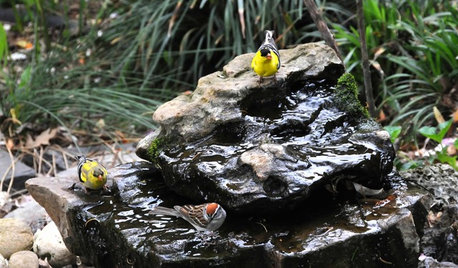Homemade Sauerkraut Question
homemadecountrylife
12 years ago
Featured Answer
Comments (27)
Yes_I_Can
12 years agolast modified: 9 years agoRelated Professionals
Concord Landscape Contractors · Fort Payne Landscape Contractors · Goodlettsville Landscape Contractors · Lakewood Landscape Contractors · Mason Landscape Contractors · Round Lake Landscape Contractors · University City Landscape Contractors · Wethersfield Landscape Contractors · Weymouth Landscape Contractors · Houston Roofing & Gutters · Kissimmee Roofing & Gutters · Long Beach Roofing & Gutters · Toledo Roofing & Gutters · Gibsonton Roofing & Gutters · Alameda Driveway Installation & Maintenancehomemadecountrylife
12 years agolast modified: 9 years agodigdirt2
12 years agolast modified: 9 years agohomemadecountrylife
12 years agolast modified: 9 years ago2ajsmama
12 years agolast modified: 9 years ago2ajsmama
12 years agolast modified: 9 years agoYes_I_Can
12 years agolast modified: 9 years ago2ajsmama
12 years agolast modified: 9 years agohomemadecountrylife
12 years agolast modified: 9 years agotracydr
12 years agolast modified: 9 years agotracydr
12 years agolast modified: 9 years agohomemadecountrylife
12 years agolast modified: 9 years agohomemadecountrylife
12 years agolast modified: 9 years agodigdirt2
12 years agolast modified: 9 years agohomemadecountrylife
12 years agolast modified: 9 years agowertach zone 7-B SC
11 years agolast modified: 9 years agodigdirt2
11 years agolast modified: 9 years agowertach zone 7-B SC
11 years agolast modified: 9 years agowertach zone 7-B SC
11 years agolast modified: 9 years agodigdirt2
11 years agolast modified: 9 years agowertach zone 7-B SC
11 years agolast modified: 9 years agowertach zone 7-B SC
11 years agolast modified: 9 years agopsittacine
11 years agolast modified: 9 years agowertach zone 7-B SC
11 years agolast modified: 9 years agodigdirt2
11 years agolast modified: 9 years agowertach zone 7-B SC
11 years agolast modified: 9 years ago
Related Stories

OUTDOOR PROJECTSBring In the Birds With a Homemade Bubble Rock
An avian expert from Southern Indiana shows how to make a burbling fountain that migrating birds will love
Full Story
BEDROOMS13 Homemade Headboards That Thrill With Creativity
Snipped from a trellis, snagged from a pallet pile and more, these inventive headboards excite in any bedroom
Full Story
HOLIDAYSA Fresh and Fun Hanukkah Dessert Table and Wrapping Station
Celebrate the Festival of Lights with gelt pouches, homemade snacks and wrapping supplies as pretty as any party decor
Full Story
KITCHEN DESIGNKitchen Luxuries: The Wood-Fired Pizza Oven
If you love homemade pizza and are (ahem) rolling in dough, a wood-burning oven may be just the right kitchen investment
Full Story
FURNITURESmart Shopper: How to Judge Antique Furniture Quality
Pick the treasures from the trash without expert experience by learning how to evaluate antiques and what questions to ask
Full Story
KITCHEN DESIGNA Cook’s 6 Tips for Buying Kitchen Appliances
An avid home chef answers tricky questions about choosing the right oven, stovetop, vent hood and more
Full Story
FUN HOUZZHouzz Quiz: What's Your Decorating Style?
Answer these 9 questions to find out what decorating style suits you best
Full Story
GARDENING AND LANDSCAPINGSee a Family Greenhouse Grown From Scraps
Can-do resourcefulness and less than $400 lead to a new 8- by 8-foot home for plants on a Tennessee family's property
Full Story
DECORATING GUIDES8 Reasons to Jump Off the DIY Bandwagon
You heard right. Stop beating yourself up for not making stuff yourself, and start seeing the bright side of buying from others
Full Story
LIFESimple Pleasures: The Joy of Baking
Fill your house with a heavenly scent and your heart with cheer by making time to bake
Full StoryMore Discussions






digdirt2